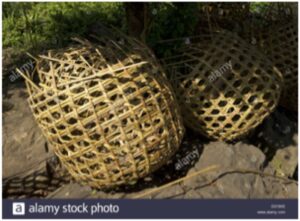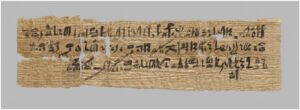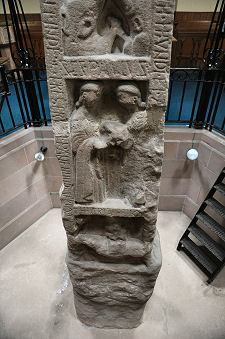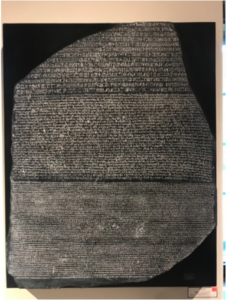Cooper N.
One way or another, we have all seen or heard of Egyptian hieroglyphics and at least vaguely know what they are. If you mention the word “hieroglyph” to a person on the street, one basic definition will immediately come to mind: pictures. Hieroglyphs are basically a written language made up of pictures that ancient Egyptians used as one of the earliest forms of literacy. Each picture or symbol represents a very specific person, place, thing, action or even sound. These pictures can be found carved or painted on walls and stone tablets from ancient Egyptian ruins, and seem to depict some sort of message or story. But are these symbols as straightforward as they seem? Some of them are, such as a man, a cat, or a bull could be easily distinguished just by looking at their respective glyphs, but there are lots of variations of these that look mighty similar to one another and might not actually make sense until put into context. In this blog post, my aim is to enlighten my readers on the sheer vastness that the world of hieroglyphs holds, and that a simple picture may not be so simple at all.
Sir Alan H. Gardiner is an English Egyptologist and scholar who in the early 20th century organized and translated a series of what he found to be the most commonly found hieroglyphs. For the main premise of this post, I will be solely referring to Gardiner’s sign list as it adequately demonstrates just how many different meanings can be depicted from hieroglyphs that, to the modern human eye, may look very much the same. The list consists of 26 main categories, each one covering a specific subject and consisting of many different symbols that go even further in depth. For example, category A is titled “man and his occupations” and within this category there are 55 different symbols that depict certain actions or roles that men were commonly known for. As you may have guessed, many of these symbols look terribly similar to one another, to the point where it feels like you may be looking at one of those “spot the difference” brain-teasers. For example, take a look at these two hieroglyphs:


(Retrieved from: https://en.wikipedia.org/wiki/List_of_hieroglyphs/A )
They look extremely similar, and one could make the inference that they both possibly refer to an elderly man. If that’s the case, then these two symbols should be able to be used interchangeably, right? I’m afraid not, since the glyph on the left with the cane (A19) refers to an elderly man being weak and fragile, whereas the other one with the pronged staff (A20) refers to a wise elder. Even though they look the same at first glance, they definitely have separate definitions that would change the meaning of whatever message they are a part of.
There is such a wide variety of symbols that it is no wonder why it has taken thousands of years to decipher them. Under section A alone we can see many examples of hieroglyphs that I couldn’t even guess the meaning of. Like this sequence of hieroglyphs A27 – A33 just look like a group of people dancing to Michael Jackson’s Thriller:

(Retrieved from: https://en.wikipedia.org/wiki/List_of_hieroglyphs/A )
But upon some research, one would learn that these men are not dancing to an 80’s pop hit, but instead these glyphs (in the respective order) refer to things such as “to transition,” “in high spirits,” “head over heels,” “to praise,” “to turn away,” “to dance,” and “to travel.” At least one of these symbols is about dancing, so maybe my judgement isn’t completely off after all.
Once we get down to section D, which is “parts of the human body,” we are delighted with 63 symbols, 75% of which certainly do not look like any human body parts I am aware of. Some can be distinguishable however, like D4 is definitely an eye:
![]()
(Retrieved from: https://en.wikipedia.org/wiki/List_of_hieroglyphs/D )
…But then D5 – D7 also look like eyes?

(Retrieved from: https://en.wikipedia.org/wiki/List_of_hieroglyphs/D )
It is true that all of these symbols are referring to eyes, the only difference being that D5 is wearing makeup, D6 has a painted upper eyelid, and D7 has a painted lower eyelid. And then we have D8:
![]()
(Retrieved from: https://en.wikipedia.org/wiki/List_of_hieroglyphs/D )
Which doesn’t even look that much like an eye to me, but it is referring to a “closing eye.” I had no idea that there would be so many different kinds of eyeballs, but hey, the Egyptians must have had their reasons for all of these specific variations.
All in all, the topic concerning Egyptian hieroglyphs has been a rather fun and interesting one to explore. As someone that has never properly done any research on this subject before, I had no idea just how vast the categories of symbols could go, and I’ve only just scratched the surface. A symbol of a man is not just any man, and an eye might not just be any eye. A dozen different variations exist with very slight differences, each one carrying with it a completely different meaning that would change the overall message. These ancient Egyptian hieroglyphs truly give a whole new meaning to the phrase “a picture is worth a thousand words.”





